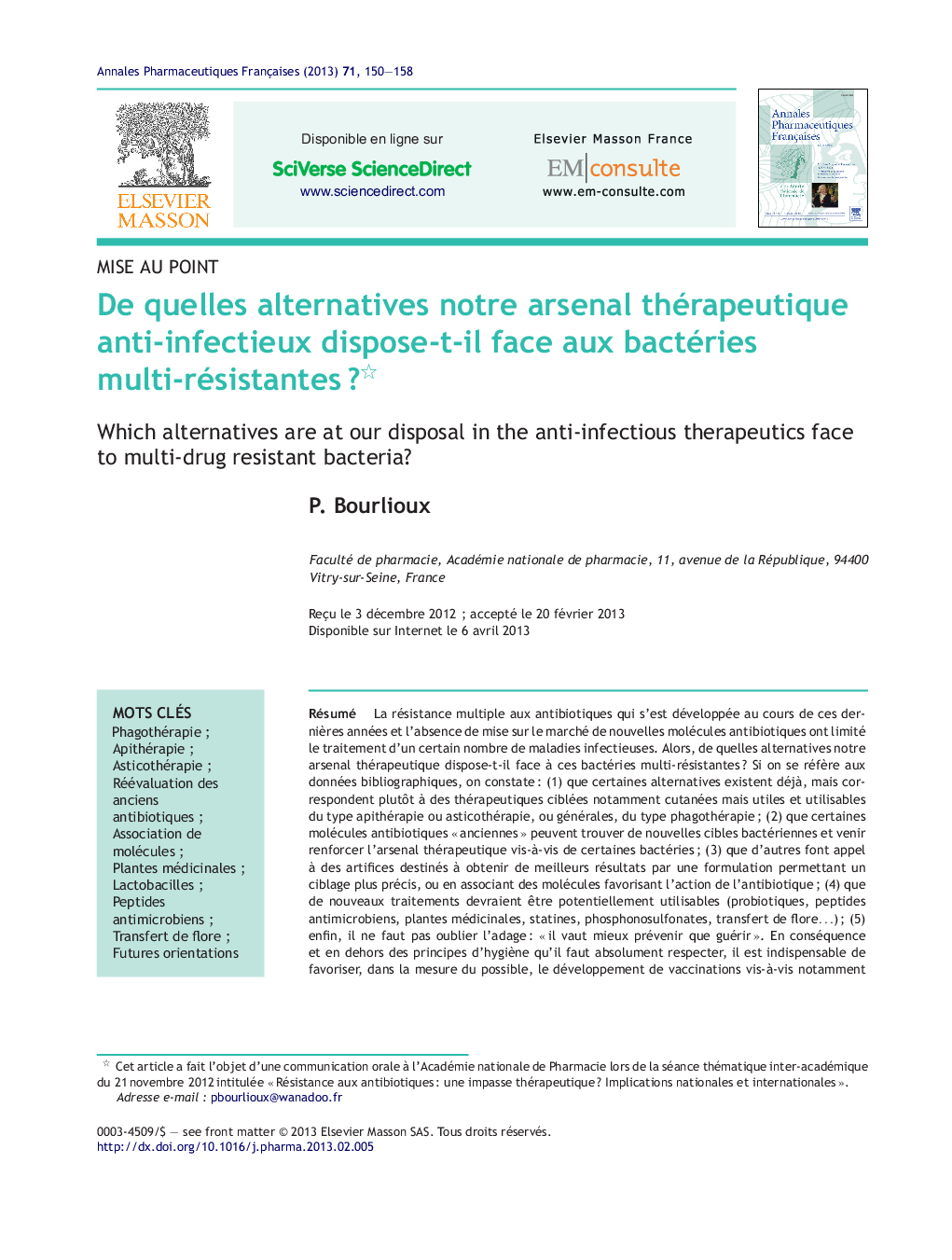| Article ID | Journal | Published Year | Pages | File Type |
|---|---|---|---|---|
| 2477853 | Annales Pharmaceutiques Françaises | 2013 | 9 Pages |
Abstract
The development of multi-drug resistance to antibiotics during the last years and the few number of new active molecules launched on the market have limited the treatment of some infectious diseases. Which alternatives are at our disposal in the anti-infectious therapeutics face to multi-drug resistant bacteria? Considering the bibliographic data, we can note different facts: (1) some alternatives already exist, but correspond more to targeted useful and usable therapeutics as phage therapy, honey therapy, or maggot therapy; (2) some “old” antibiotics can find new bacterial targets and reinforce the anti-infectious therapy towards some multi-drug resistant bacteria; (3) new formulations can allow targeted drug delivery via nanoparticles and the association of molecules can reinforce the antibiotic antimicrobial effect; (4) new treatment could be potentially usable as: antimicrobial peptides, probiotics, herbal medicines, statins, phosphonosulfonates, fecal transplantsâ¦; (5) at least, we must not forget that “it's better to prevent than cure”. So, besides the principles of hygiene that must be respected, it is necessary to promote (if possible) the development of new vaccines against bacteria responsible for nosocomial infections. Facing with this potential, we can say that new orientations are open with very different levels of success and that it is urgent to find new targets ignored or forgotten until now.
Related Topics
Health Sciences
Pharmacology, Toxicology and Pharmaceutical Science
Drug Discovery
Authors
P. Bourlioux,
